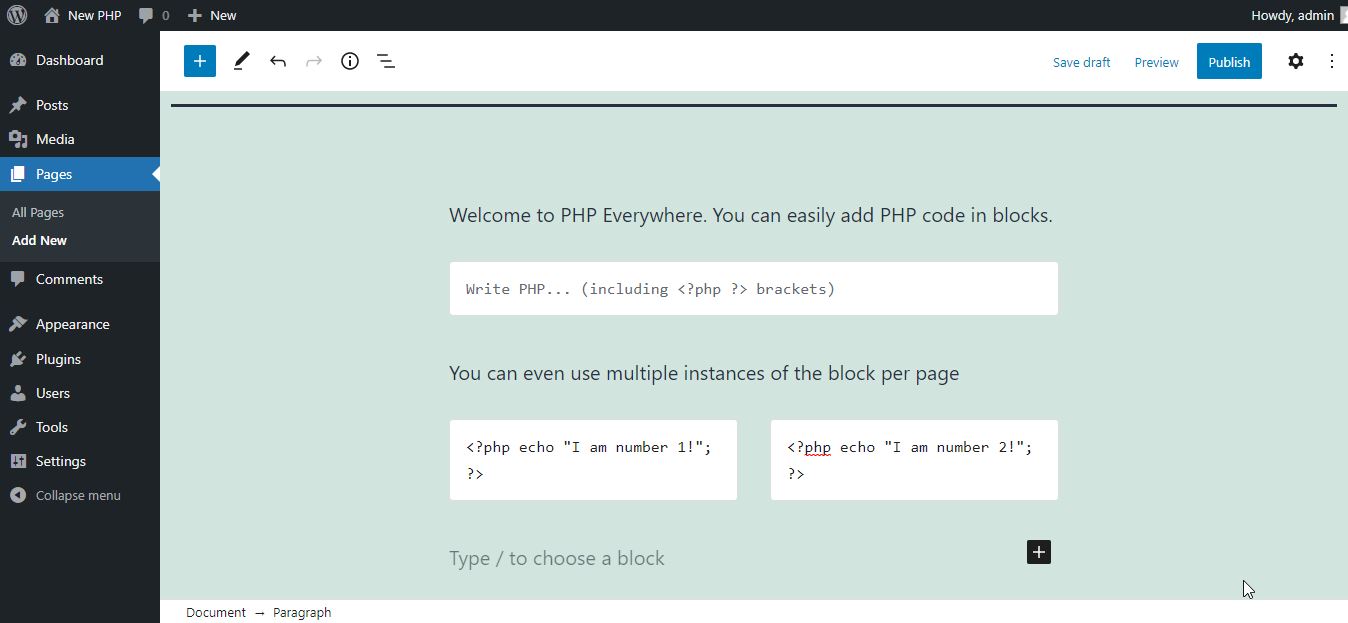PHP Everywhere: Breakdown

At its most basic, PHP Everywhere allows users to add snippets of custom code to their WordPress blog or website. To do so, all a user needs to do is select the function they want the snippet to perform. This could be anything from a simple date display to a complex user input form. Once the user has chosen the functionality, they can add the snippet either by copying and pasting from a text document, or by writing the code directly into the plugin's associated editor. From here, the user can decide which conditions need to be met before it can be executed. This can include anything from selecting a particular page or post in WordPress, to setting a specific day of the week or hour of the day. Additionally, there is a version control system in place that allows users to track modifications made to each code snippet, for greater control and accuracy.
Moreover, the plugin also offers a range of features for highly targeted snippets. For example, it is possible to set criteria for which actions should trigger the snippet. These can range from specific URLs and post types, to user roles and geolocation. In addition to setting criteria, users can also opt to exclude particular criteria, which can be useful for excluding variation of a snippet from particular pages or posts. Furthermore, the plugin also provides a convenient way to package and store snippets for reuse later. This can save users a great deal of time and effort when setting up their WordPress blog or website.
Finally, PHP Everywhere also includes a range of security features, making it a great choice for those worried about their code being compromised. The plugin includes a comprehensive version control system that allows users to track all changes made to each snippet. Furthermore, all code is securely stored and encrypted within the plugin, and can only be accessed by authorized users.